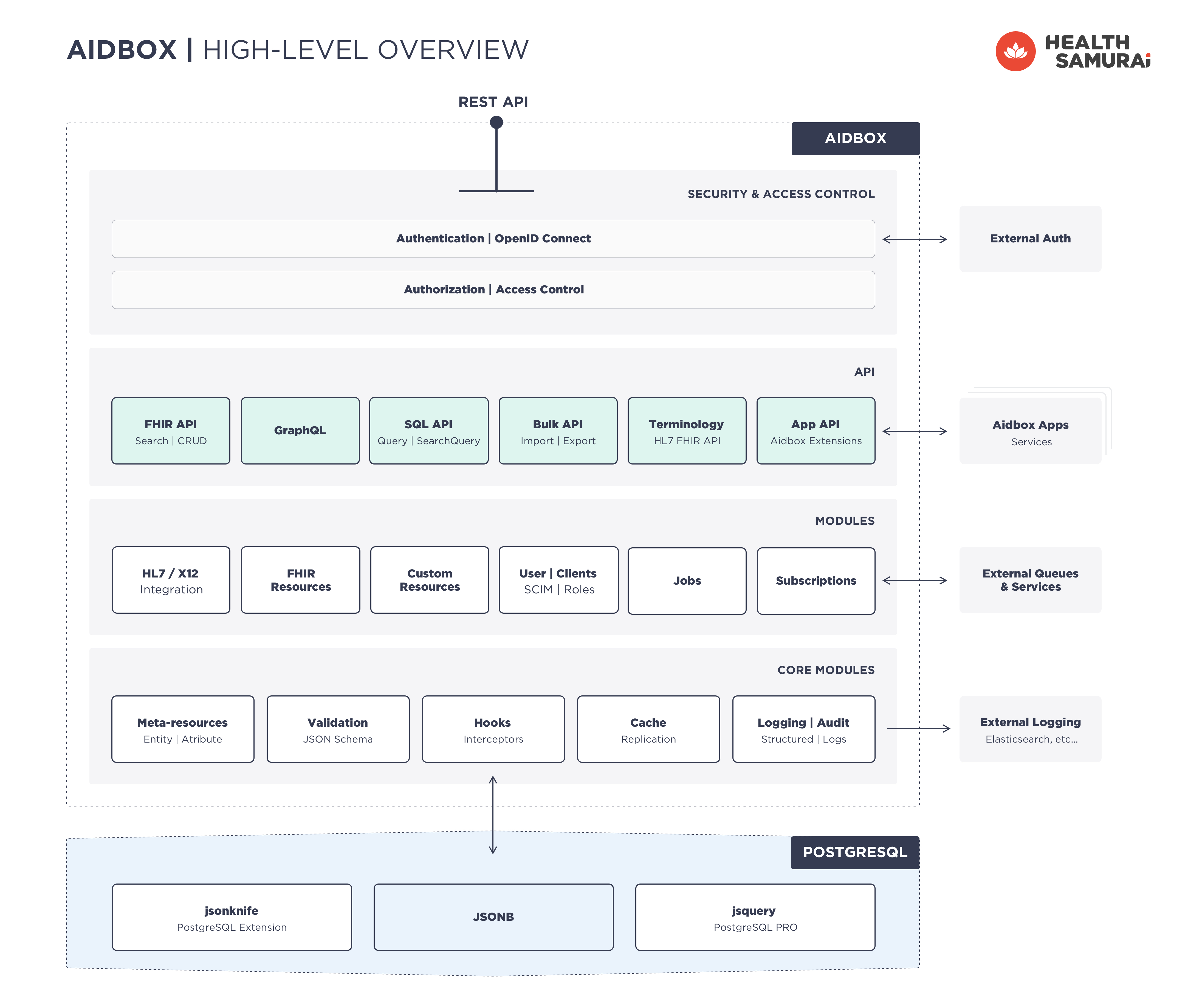| description |
|---|
Aidbox is a backend development platform for modern healthcare applications on FHIR. |
Aidbox is a backend development platform for modern healthcare applications. Aidbox users have already built cloud EHR systems, patient-facing mobile applications, data-analytics products, and integration platforms.
Aidbox uses FHIR as a foundation and provides developers with many components that different medical records applications can reuse:
- FHIR-aware PostgreSQL storage with SQL on FHIR support
- FHIR REST API with GraphQL, reactive API & subscriptions
- User management, access control, and audit log
- Built-in FHIR, ICD-10, SNOMED, RxNorm, LOINC, and US NPI terminologies with the ability to load your terminologies and value sets
- Custom resources & operations; first-class extensions
- HL7 v.2, X12, and Apple HealthKit Medical Records adapters
- Plugins extensibility with the use of your favorite technology
- Bulk API and analytics tools integrations that include Tableau, Power BI, and Jupyter
- Automated cloud infrastructure built on Kubernetes for AWS, Azure & GCP
Aidbox is a metadata-driven platform. It means that almost everything in Aidbox is represented as data (resources). For example, REST endpoints (operations), resource definitions, profiles, and access policies are resources in Aidbox. We call them meta-resources. Meta-resources play by the same rules as other resources - you can request and manipulate meta-resources with the use of the unified REST API.
You can try Aidbox in the cloud or get a free version evaluation on your local computer.
{% content-ref url="getting-started/run-aidbox-in-aidbox-sandbox.md" %} run-aidbox-in-aidbox-sandbox.md {% endcontent-ref %}
{% content-ref url="getting-started/run-aidbox-locally-with-docker/" %} run-aidbox-locally-with-docker {% endcontent-ref %}
Aidbox implements most of the FHIR specification and supports all official versions of the standard. We designed Aidbox to be FHIR-compatible, but it uses its own framework. Besides FHIR, Aidbox offers many useful additions. The key differences are listed below:
- Aidbox stores Resources in Aidbox format, which is isomorphic to FHIR, but not the same.
- Aidbox serves two sets of API: Aidbox API from "/" and FHIR API from "/fhir**"**. Aidbox API works with Aidbox format, and FHIR API works with FHIR format. When you interact with FHIR endpoints, Aidbox does on-the-fly conversion between these two formats.
- Aidbox offers First-Class Extensions and Custom Resources, which FHIR doesn't support, but these additions are very handy for designing real-world systems.
- Aidbox uses its own Entity/Attribute, SearchParameter and AidboxProfile framework instead of FHIR Structure Definitions. FHIR Profiles should be converted to Aidbox meta-resources.
In Aidbox, everything is a Resource. Each resource type is described with special Entity and Attribute meta-resources. Entities describe resources and types. Attributes describe the structure of resources and complex types. For each Entity, Aidbox generates database schema in PostgreSQL, REST endpoints for CRUD, history, search and other operations, and JSON-schema for validation.
Aidbox stores FHIR resources almost as is with 3 types of isomorphic transformations:
- References
- Union (Choice Types)
- First-Class Extensions
